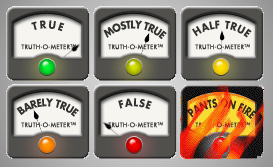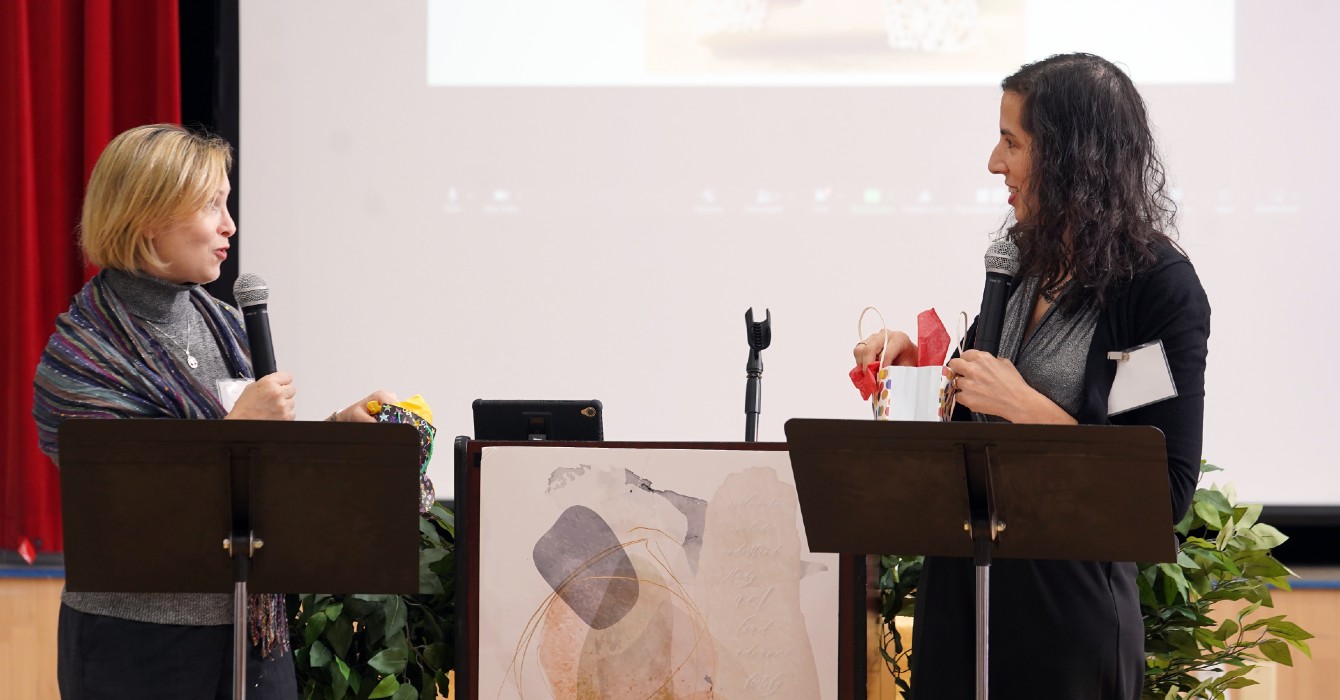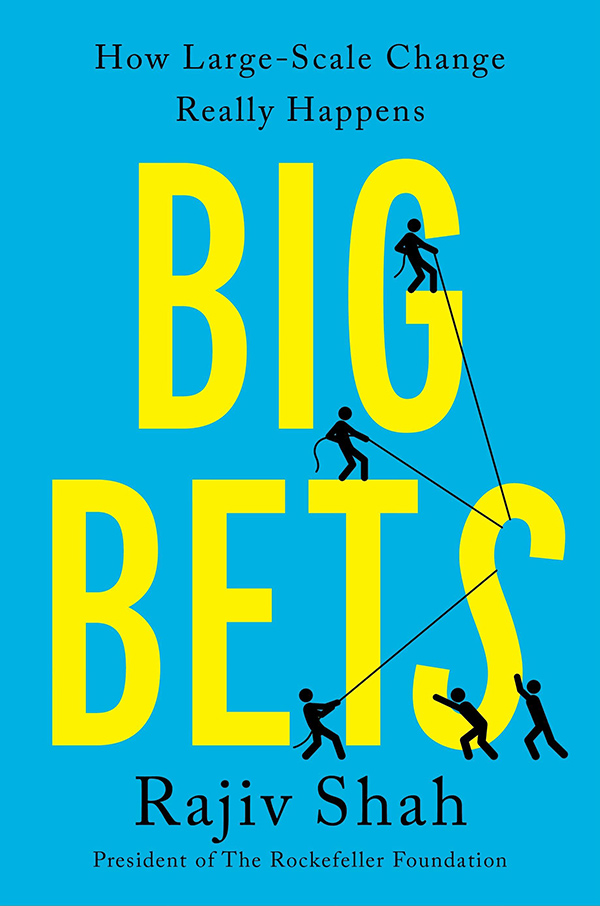Newspapers are in trouble: readership is plummeting; advertising is disappearing; journalists are being laid off or are leaving the profession.
For St. Petersburg Times Washington bureau chief Bill Adair, his belief in the newspaper’s watchdog function outweighed the grim environment in which he found himself.
 So instead of quitting the business, Adair persuaded the St. Petersburg Times leadership to try an experiment. The result was PolitiFact, a website dedicated to fact-checking politicians’ claims.
So instead of quitting the business, Adair persuaded the St. Petersburg Times leadership to try an experiment. The result was PolitiFact, a website dedicated to fact-checking politicians’ claims.
The site checks out promises and claims of both politicians and pundits, and is written in a cheeky, breezy style typified by the Truth-O-Meter and its dreaded “Pants on Fire” designation for outright falsehoods.
The project won the 2009 Pulitzer Prize for national reporting, and since then the newspaper has “franchised” PolitiFact and now works with partners in nine states.
Adair spoke to Faith & Leadership about the process of working within an existing institution to create a new way to pursue its mission. The following is an edited transcript.
Q: So how did this idea get hatched?
It was both personal and journalistic. Personal in that a lot of my friends were getting out of journalism about five years ago, and I came to a point in my career where I had to say, “Should I stay or should I go?” -- to quote the Clash.
I decided that I would not get out. For the kinds of things I like to do, this is just the most fulfilling job I can dream of. I felt, “OK, I’m going to stay and I’m going to be involved in new media.”
Then in 2007, as we started to decide what we would do for covering the presidential campaign, I went to my editors with a proposal to do PolitiFact.
The idea for PolitiFact actually dated back to when I was in college and I did my senior thesis on [political] fact-checking, and I said that the media needed to do more fact-checking, particularly of TV ads, because they were a source of a lot of misinformation.
But interestingly, I never really practiced what I preached. When I was covering the Republican National Convention in 2004, there was a speech by Zell Miller, who was the Democratic senator from Georgia and the most prominent Democrat to endorse President Bush.
Miller talked about how John Kerry had voted against defense projects and how he was weak on defense. At the time, I was at the convention, and I thought, “Well, that’s not true.” But I didn’t do anything about it.
I always regretted that. So as we started to think about what we wanted to do for the presidential campaign, I went to the editors with a proposal that, instead of covering the campaign in a traditional way, I would start a fact-checking website.
I guess you could say lesson one is if you want to try something new, you’ve got to have one person who really believes in it. I really started pushing to do this, and I did sketches of what it would look like and I wrote memos on what shape it should take and how it should work. I went to the executive editor, Neil Brown, and said we should do this.
It also takes a culture that embraces something new, a culture that’s willing to say, “OK, let’s put some resources into that and try it, even though it’s a little bit different than what we’ve done before.”
I think the people at the top need to be willing to change how things are done. I’m fortunate enough to work at a place where the people at the top were willing to change how things are done. That’s the biggest thing -- then you need somebody with some energy who can keep pushing.
I think the Times has always done good presidential coverage, but they were willing to sacrifice the usual.
Q: To give up the sure thing?
Yes. To try this new thing and also to try something completely new in terms of a product that would be published first on the Web and also would be housed in a separate content management system.
I had no idea about any of these things when I came up with the idea, but I quickly learned that you’ve got to have a big database, and we decided that we would do it outside the normal structure of the St. Pete Times’ Web content management system. That takes a real commitment on the part of the IT department.
So at every point there was a willingness to try something new and to do things in ways that broke with tradition.
There was a willingness: “We’ll build it ourselves.” OK. “We’ll use this open platform.” OK. “We’ll house it outside our servers.” OK.
There was a real spirit of innovation that fueled it. So one reporter with an idea then got great support from other people, from the Web architect of PolitiFact to the head of IT. So I would say it took an open culture.
Q: PolitiFact broke with tradition, but in some ways it adheres to the greatest tradition of journalism, right?
It is accountability journalism, and we’ve been doing accountability journalism forever -- holding public officials accountable for their words. So in that sense it was very much in our wheelhouse.
So the concept of accountability journalism isn’t new, but the execution of how we do it is. The kind of reporting that goes into a PolitiFact item is deeper and more thorough than in a typical news story, but it’s very much along the lines of what journalists have been doing for years. We’ve just created a new forum for it.
Q: PolitiFact has a serious mission, but the site has an attitude, more like a personal blog than an institutional site. When you find out a politician has actually lied, for example, there’s a little animated icon of flames, and it says “Pants on Fire.” How did you get approval for that injection of humor?
Well, the idea for lightening it up a bit was actually [chair and CEO of the Times Publishing Co.] Paul Tash’s idea. Seriously.
It was Tash who said to make sure that the site doesn’t come across as too serious or boring, and have a little fun with it.
As we kicked around what we wanted to do with the meter, we realized we wanted a rating for the most ridiculous falsehood. “Pants on Fire,” the name, was [Kevin McGeever, the Web editor’s] idea.
Q: You launched it with the St. Petersburg Times, but now it’s expanding beyond that, correct?
From the beginning, we thought that this was a recipe that would work elsewhere. Even before we launched, we had ideas that you could franchise this like a fast-food restaurant and have PolitiFact operations all around the country.
So that concept -- I think of it as franchising, but technically that’s not the business arrangement that we have with our state partners -- we felt from the beginning that the Truth-O-Meter would work as well on a mayor as it does on a presidential candidate.
In 2009, we started to make plans, because we knew that we would be approached by newspapers that wanted to partner with us in 2010, and indeed in November 2009, we got approached by the Austin American-Statesman. They wanted to do PolitiFact Texas.
So we were ready in the sense that we knew that it was going to happen. We weren’t ready in that we had never done anything like this before. I didn’t have any experience in training, in writing manuals, in quality control -- all of the things that you need to do to have those sorts of extensive partnerships.
Since we didn’t have the expertise, I had one of our interns do a report on what McDonald’s and Subway do to maintain quality at all their stores. How do you take a successful product and make sure that if it’s being made by lots of different people that it is as good quality in Peoria as it is in St. Petersburg?
Q: You literally looked at restaurant franchising for your model?
Yes. And we learned several things. One is the importance of training materials. You need to make clear to your partners what the standards are and how to make a Big Mac or write a Truth-O-Meter article. You need to write that down.
Another lesson was the importance of actual training, of just going and doing thorough training to make sure that they understood what are the standards. How do you do the journalism, and how do you resolve questions, and how do you edit them, and how do you do a Truth-O-Meter?
Then the third lesson was the importance of quality control and checking the product to make sure that that Big Mac in Peoria tastes as good as it should.
We let them know what work they’ve done that is very good -- but also let them know when we find that their work has not been as good as it should be. It’s important to develop personal relationships with all of the people that you work with and communicate with them well.
Q: And what about the financial aspect? Is this a new model for revenue for the paper?
It is. We’re getting revenue from the state partnerships, and they pay us several different kinds of fees. They pay us to build the website for them, and they pay us for training, and then they pay us an ongoing fee for licensing and Web hosting. So this is a whole different source of revenue for the St. Pete Times.
Our partners are willing to pay that, because this is such a valuable, important kind of journalism for them that they’re willing to make a commitment. Not just in terms of the money, but also in terms of resources, because most of them have committed two reporters each to it.
Their revenue would come from different ways -- they can sell ads on their state sites and they can put the content in their papers, and many of them find that even more valuable than putting the content on their state sites. They really appreciate that they have a new feature in their paper that is very popular with readers.
In most of our states, the PolitiFact items run every day on the front of the metro section, and PolitiFact is regarded with the same fondness from readers as a local columnist. People want to look at the PolitiFact items every day and find out who are they checking and did they get a “True,” a “Half True” or a “Pants on Fire.”
Q: Do you see other implications of this project for your industry or others?
We need to embrace and create new forms of journalism. We need to take advantage of the Web and mobile devices and various ways that people are getting information and really take advantage of the power of technology.
We need to rethink the story form. The form really hasn’t changed in 100 years, and yet the Web does a lot of things really, really well. So, for instance, if you have an ongoing saga such as, say, the debate over the health care law, you should probably find ways that you’re not repeating information, so readers only tune into what’s truly new.
If I wasn’t tied up fact-checking, I would explore this question: how we can create a new story form that builds on what has been done before to create a more seamless, thorough serial of an ongoing story?
Q: So the form that made sense 100 years ago -- with the third-paragraph summary of what’s already happened -- you don’t need that when you can click a link.
Exactly. We’ve had monkey on the loose in St. Pete for months, and [the St. Petersburg Times has created] a page where you can get just the latest on the monkey but then you can find previous accounts of what the monkey has done and where he's been seen.
Q: There’s a monkey on the loose?
Yes. It’s your classic monkey-running-loose-in-a-Florida-metropolitan-area atory.







